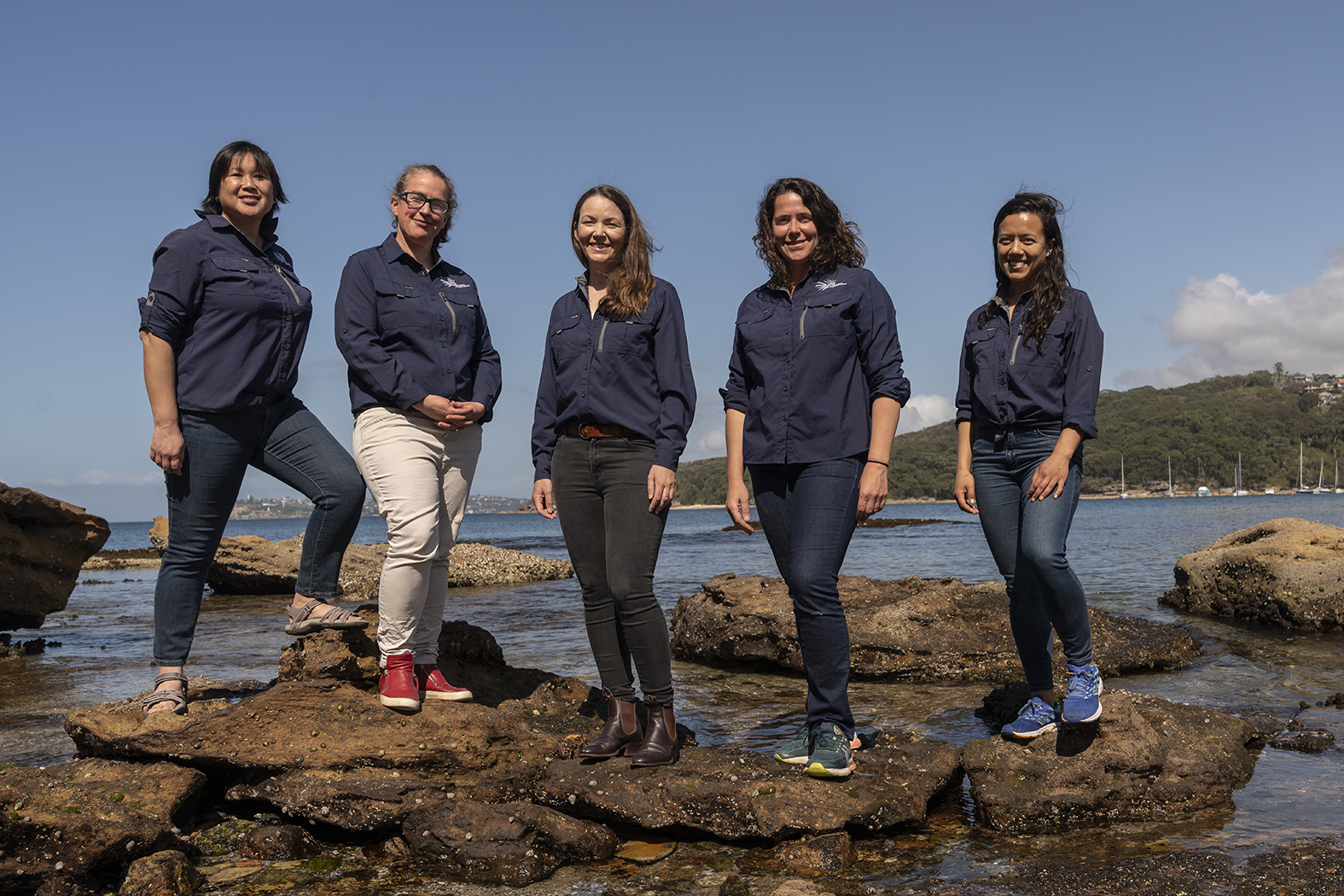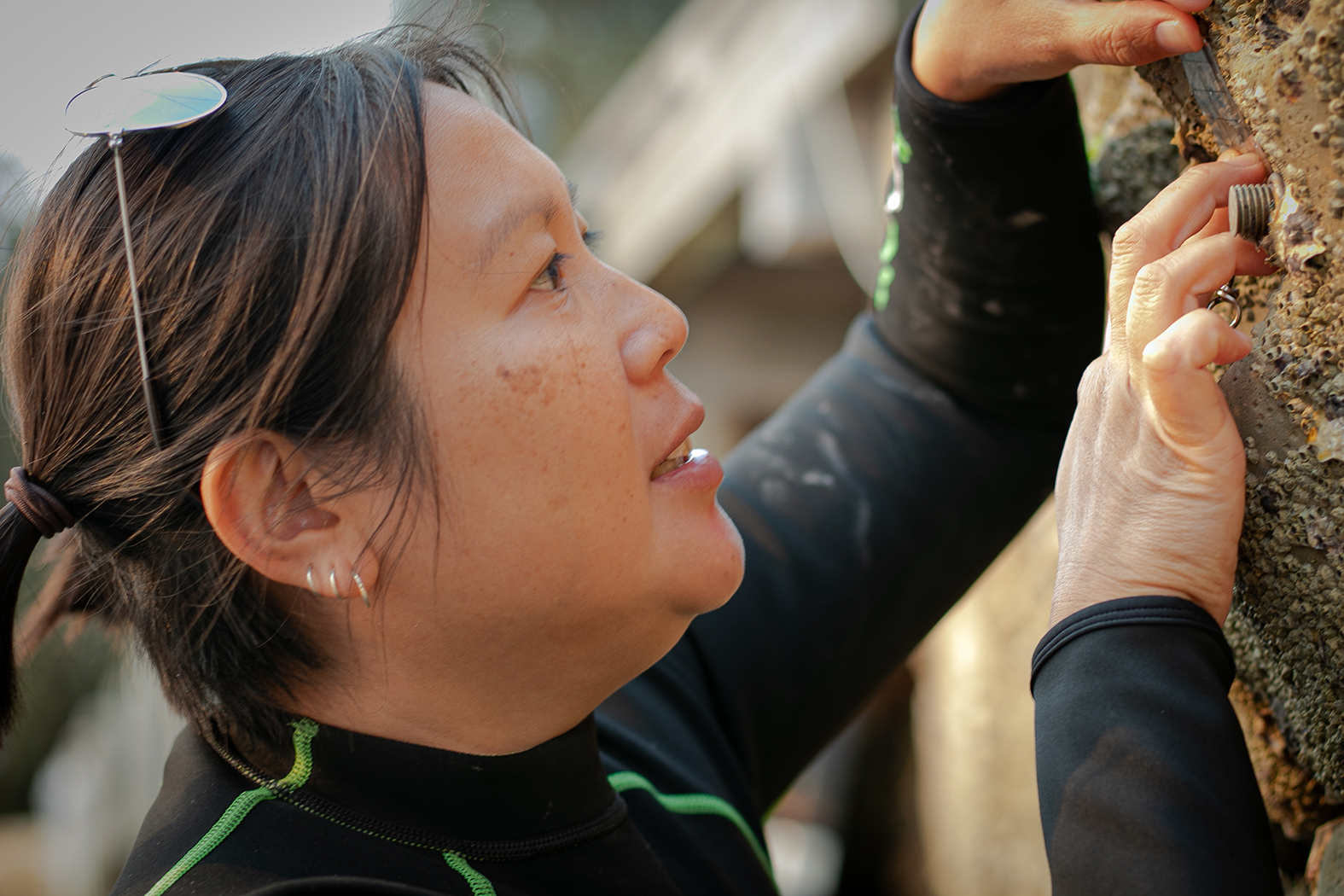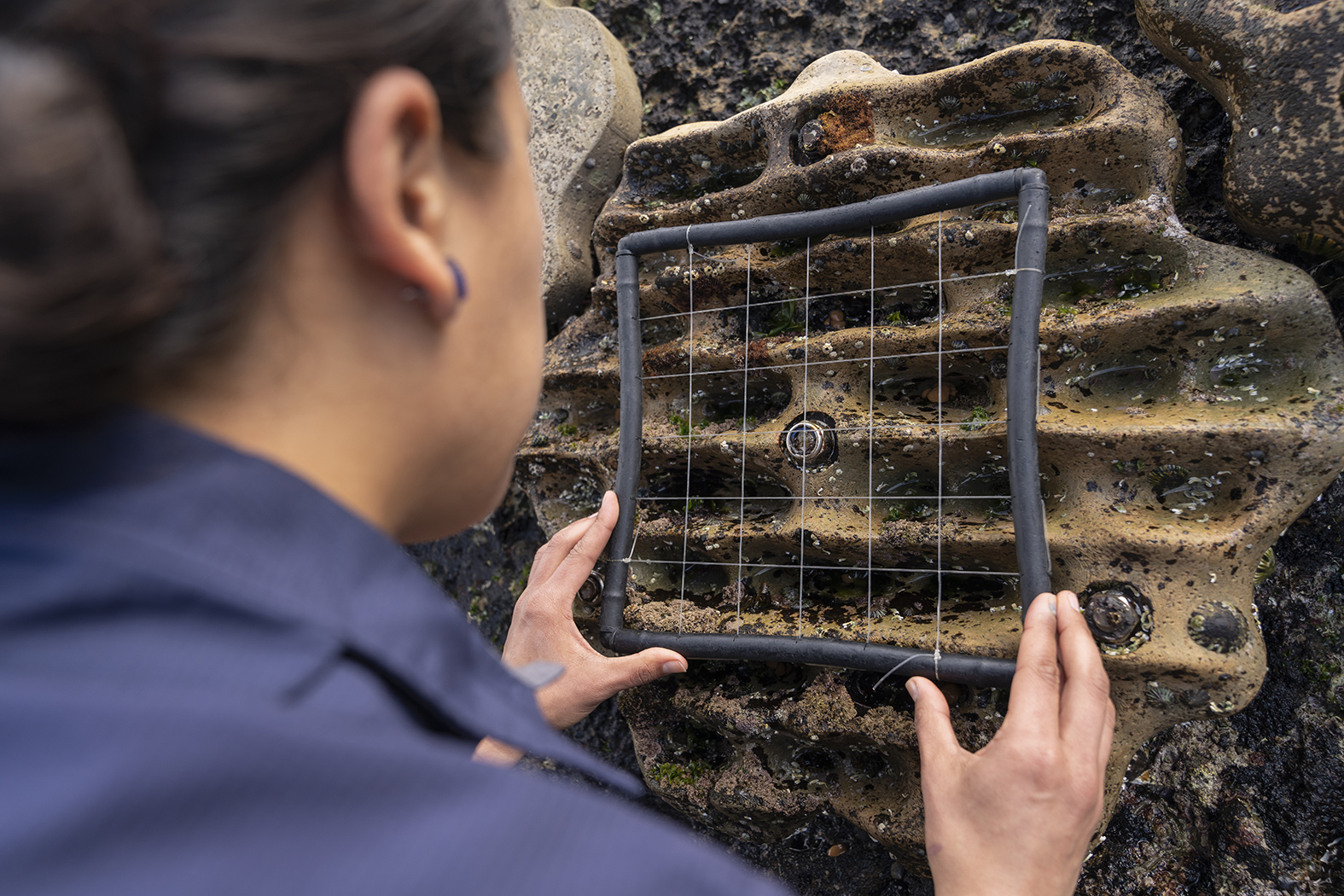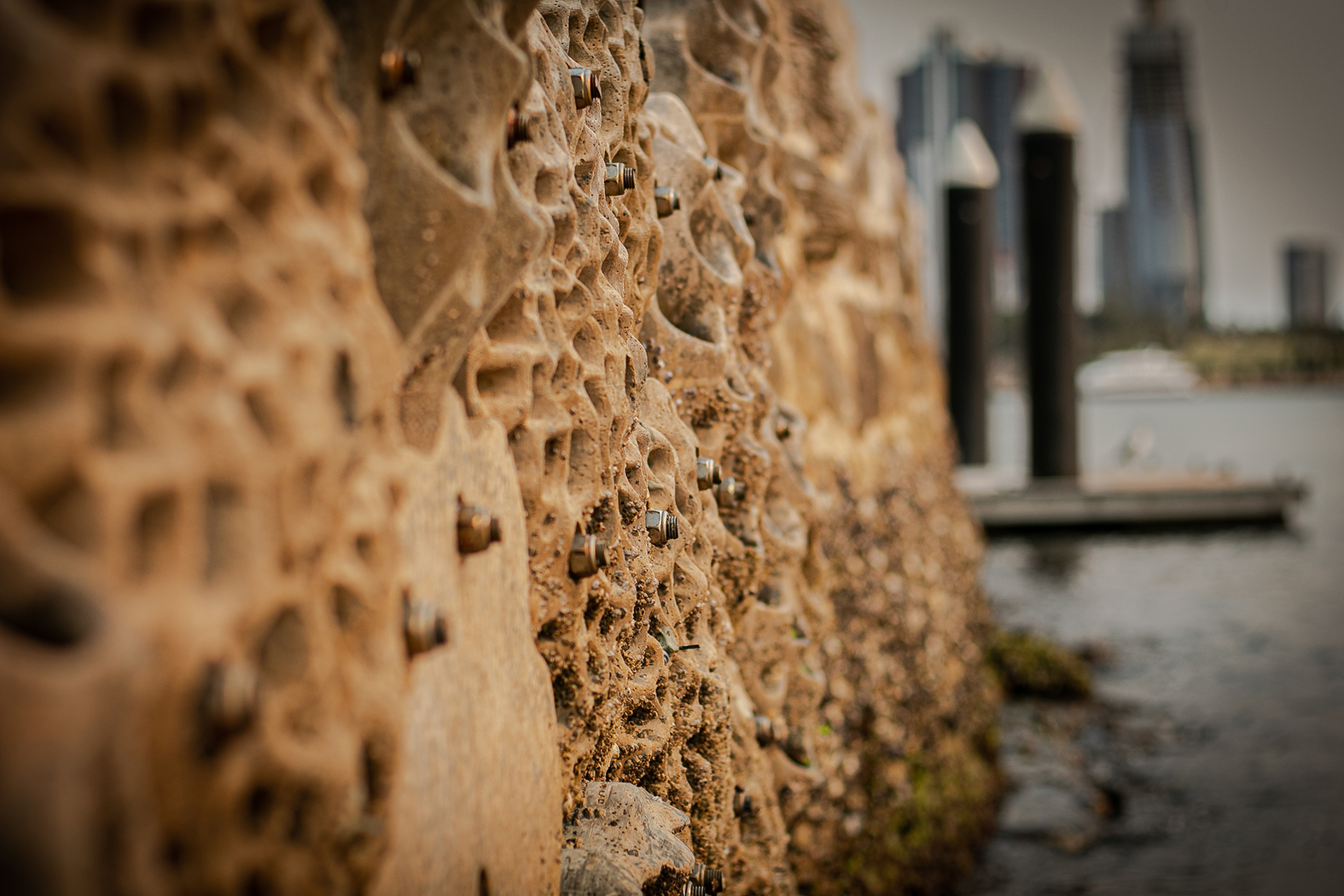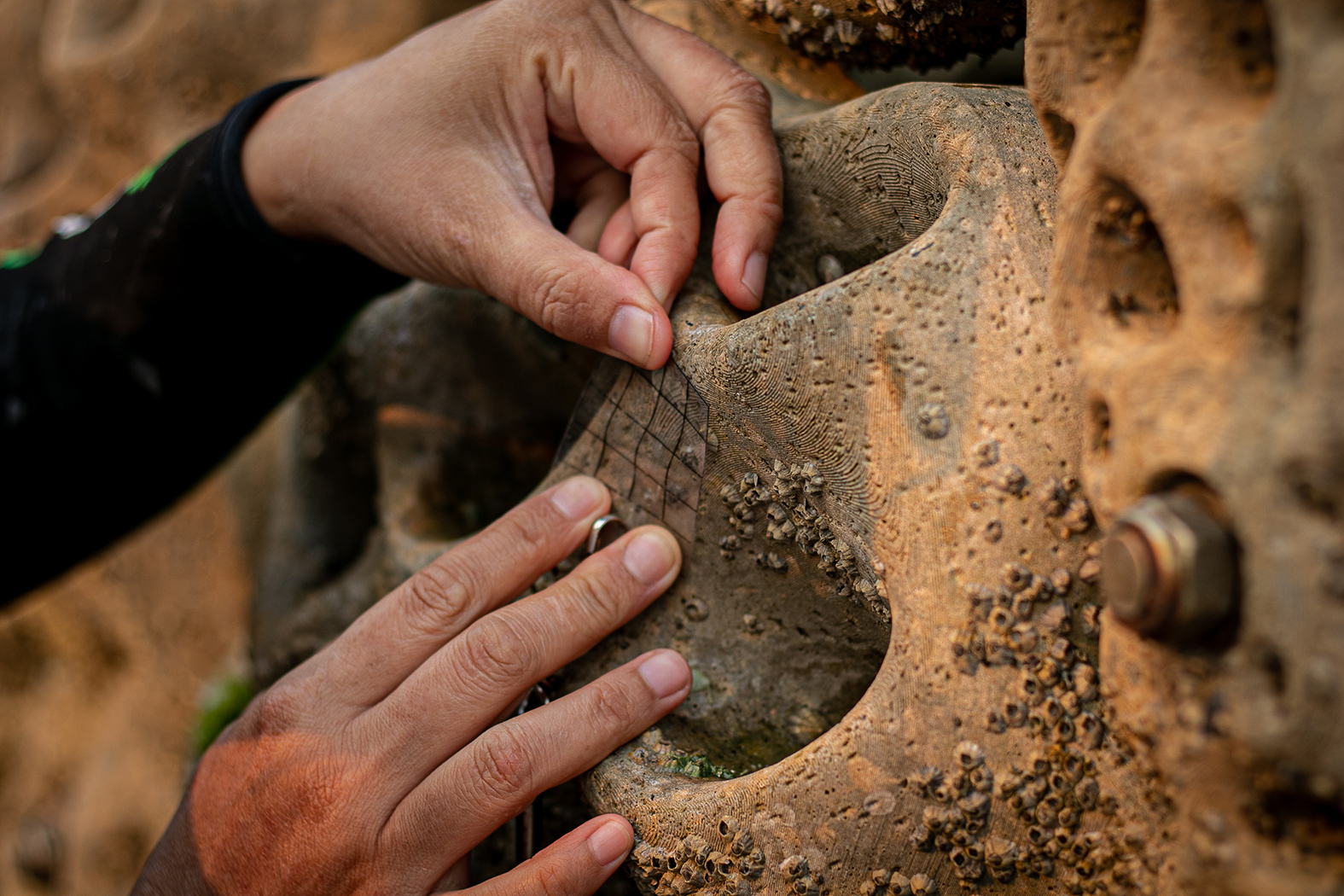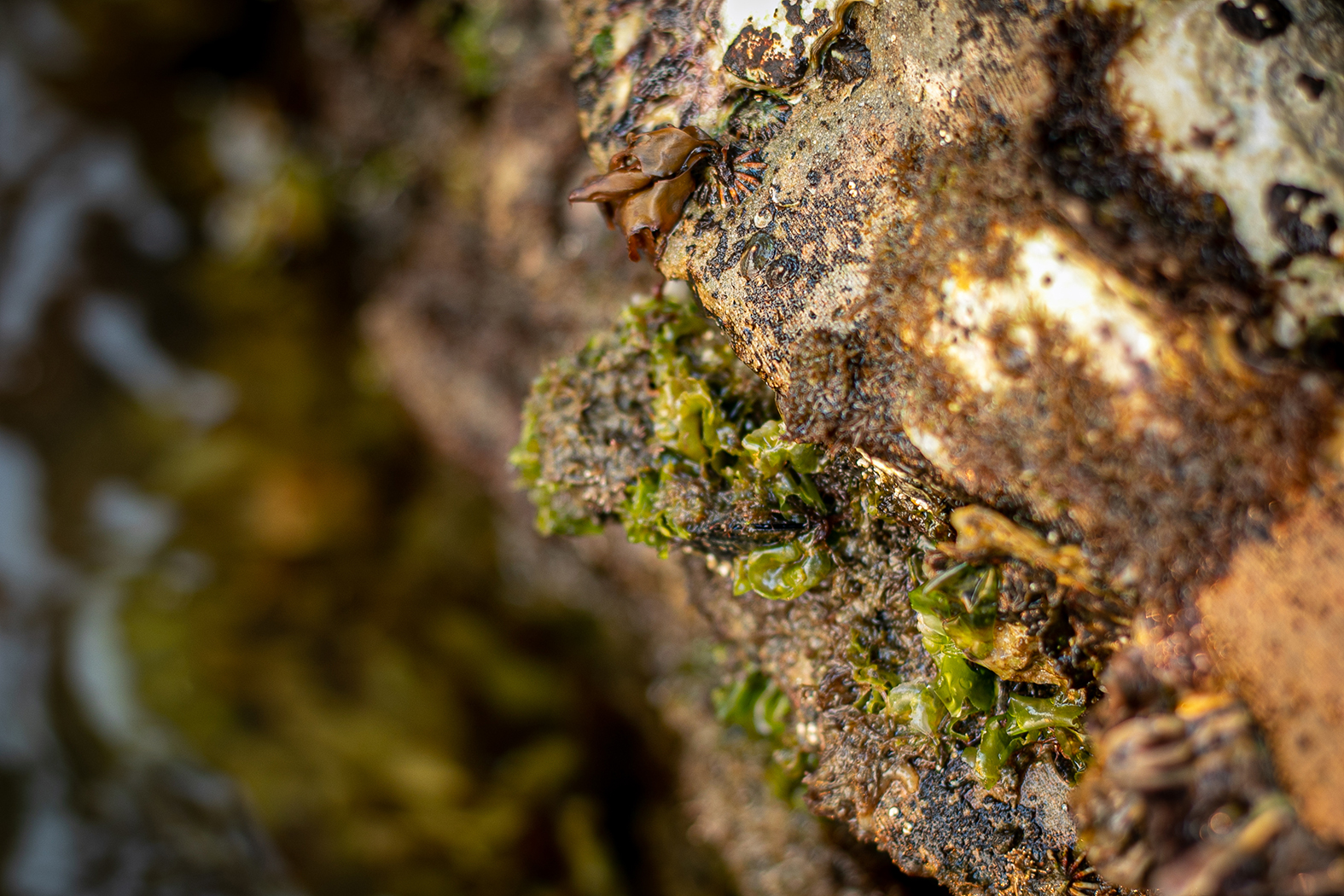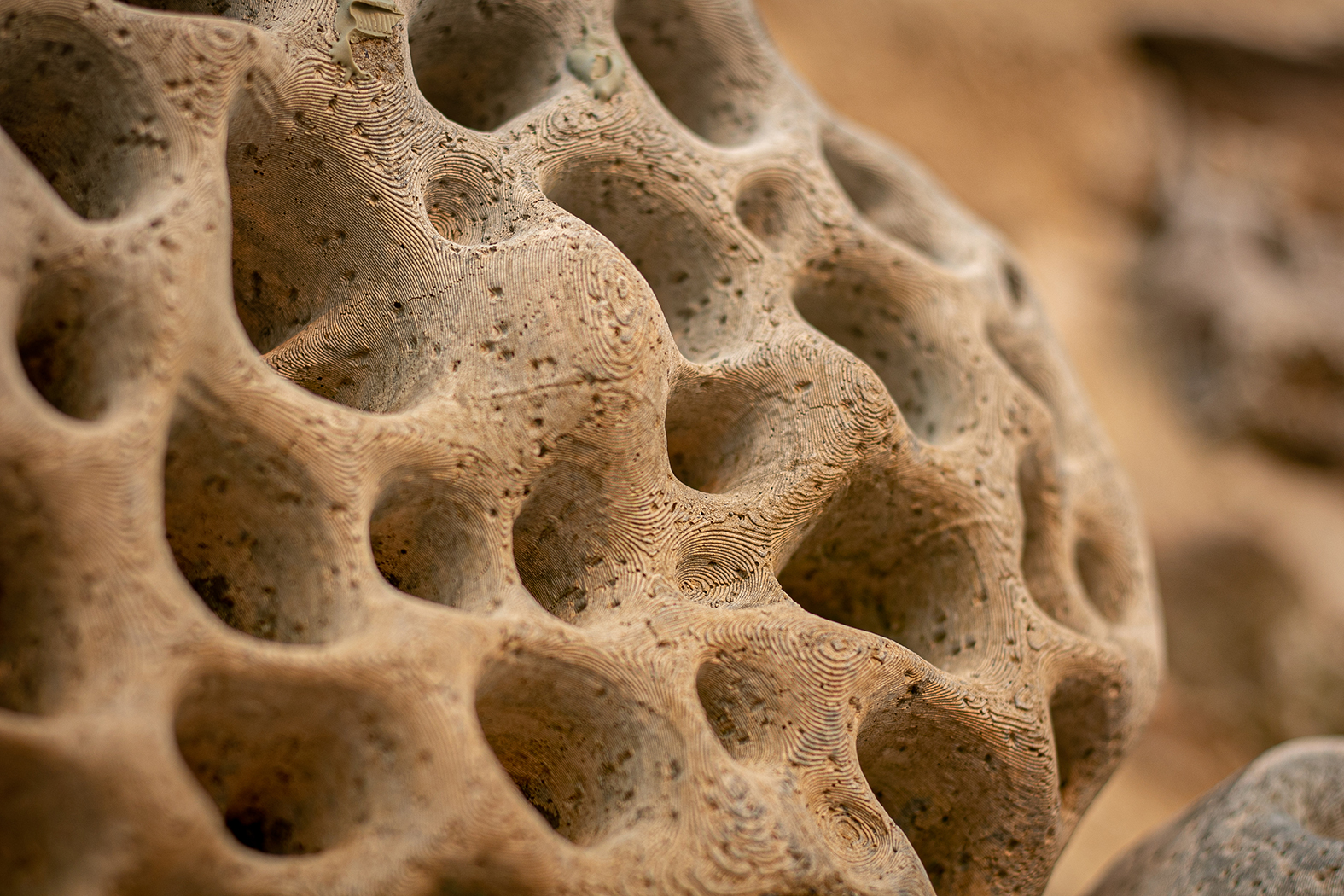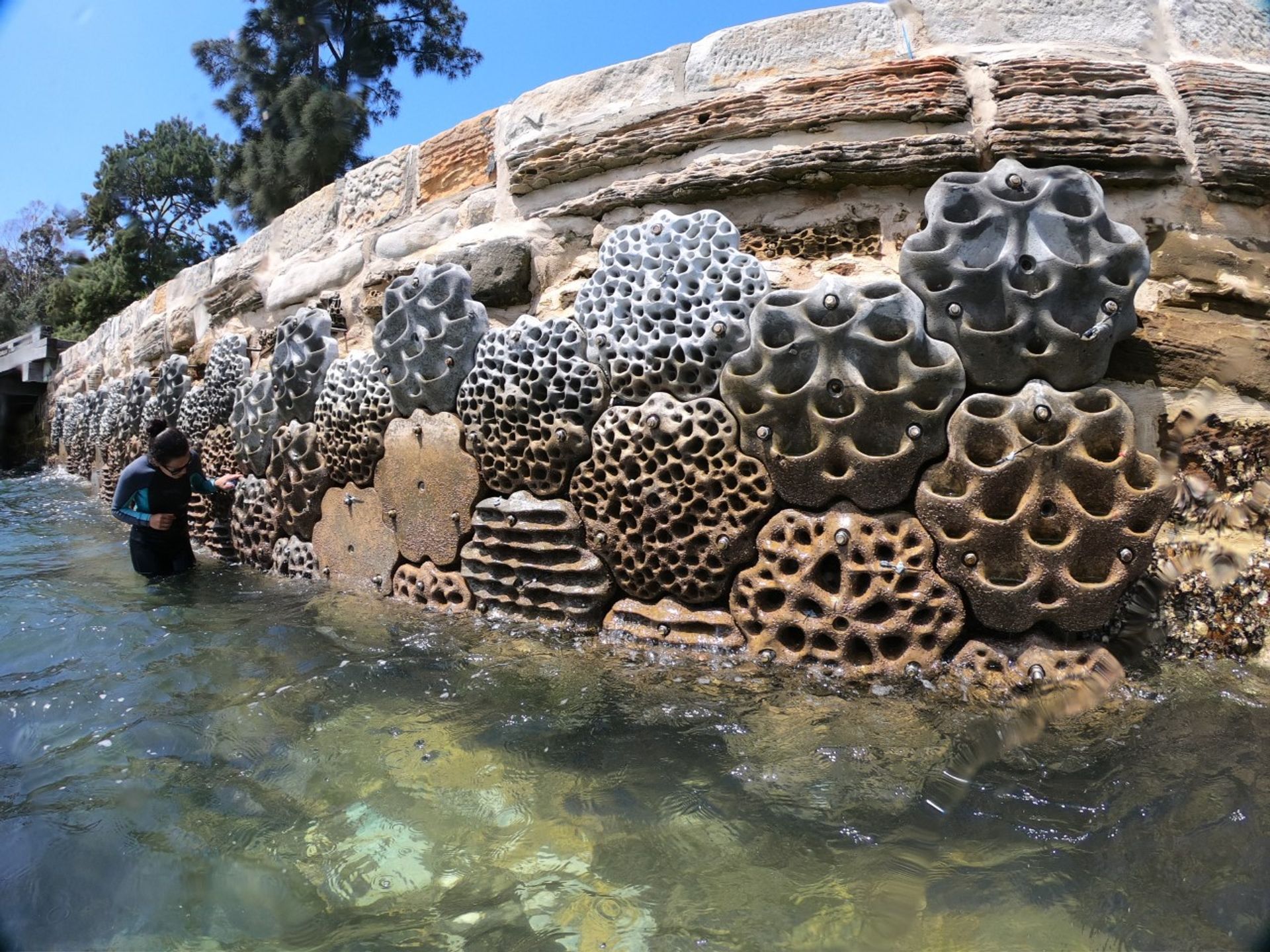Sea-life support
An impressive Australian initiative, Living Seawalls is turning the tide on declining biodiversity and worsening water quality worldwide.
Written by Jeni Bone
10 November 2022
One of three finalists in the ambitious Earthshot Prize, the project is also attracting hundreds of species back to urban waterways.
Recognising the world’s most innovative solutions to the greatest environmental challenges facing the planet, the inaugural Earthshot Prize has been run and won, catapulting winners across five categories to global prominence.
In the Revive our oceans category, the Australian entry missed out on the top gong but has already attracted a torrent of international interest from the US, Sweden, New Zealand and the UK.
“We were thrilled to be nominated,” says Macquarie University coastal ecologist Associate Professor Melanie Bishop, co-leader of the team of five scientists behind Living Seawalls, a modular solution for creating habitats in urban waterways.
“The Australian Marine Conservation Society nominated us, and we’ve been overwhelmed with the response,” she enthuses, referring to the team that comprises co-founders Dr Katherine Dafforn and Dr Mariana Meyer Pinto, Project Manager Dr Maria Vozzo, Researcher Dr Aria Lee and Industrial Designer Alex Goad.
Selected as one of just three finalists in the Revive our oceans category, Living Seawalls is a project at the intersection of ecology, design and engineering.
A flagship project of the Sydney Institute of Marine Science (SIMS) with industrial design expertise from Reef Design Lab and the support of councils, philanthropists and various corporate partners, Living Seawalls uses interlocking panels to encourage marine life back to coastal sea defences.
“Seawalls, breakwaters and built structures such as wharves are part of a growing construction boom in our cities and waterways,” explains Associate Professor Bishop, “and a major cause of biodiversity loss in our coastal oceans.”
As an example, up to 50 percent of the shoreline of Sydney Harbour is hardened by seawalls that are smooth, flat and featureless. As a result, the oyster reefs that once dominated the shorelines have nearly disappeared.
“The Living Seawalls panels add complexity to the existing structure and provide a habitat for marine life, attracting filter-feeding organisms like Sydney rock oysters that absorb and filter out pollutants.
They also create habitats for fish, seaweed and other species in the food chain,” notes Associate Professor Bishop. “Living Seawalls aims to bring life back to the most degraded marine environments on earth,” she says.
The concept, based on 20 years of research, demonstrates that incorporating ecologically friendly principles into new and existing construction can have significant biodiversity benefits.
The Living Seawalls team began product testing in 2015. The objective was to provide the proof of concept needed for funding to scale up, with the ambition of global rollout. At 27 sites worldwide, small experimental panels were trialled.
Subsequently, 16 full-scale Living Seawalls have been established in the past three years – 10 Sydney Harbour installations and sites in Port Adelaide, Narooma and Townsville as well as in Gibraltar, Wales and Singapore.
Their research was boosted by grants from the NSW State Government, philanthropists and the support of corporate partners. “We were also fortunate to have the support of councils around Sydney Harbour who championed our work,” adds Associate Professor Bishop.
From late 2018, Living Seawalls were installed around Sydney Harbour, including the Volvo Living Seawall at Milsons Point and, in 2020, an underwater garden sponsored by Lend Lease at Barangaroo.
Made from 3D-printed moulds, the panels can be cast with various materials, including upcycled and recycled products, tailored to suit the marine environment where it is to be placed.
“One method we use is attaching panels to stainless steel rods inserted into the wall,” says Associate Professor Bishop. “Where there is existing marine life on a wall, we can site the panel 10 centimetres off the wall, tripling the surface area and providing a cavity behind the panel, which fish love.”
“The panels can also reduce surface temperatures by 10 degrees Celsius, which in a warming climate can be the difference between life and death for a lot of species.”
In the case of Sydney Harbour, marine-grade concrete was chosen because Sydney rock oysters have a penchant for concrete. Two years on and the results speak volumes.
“We were surprised at the pace: within hours, sea snails and fish were hiding among the panels. In two years, we’ve observed 115 different species on our panels,” Associate Professor Bishop reports.
Among them are native species of barnacles, snails, limpets, seaweed, sponges, bryozoans, hydroids, ascidians, mussels, tubeworms, small crustacea and more.
“There are over 36 percent more species evident than on the unmodified sections of wall. It’s very exciting, not just for a revival of biodiversity and rehabilitation of the environment, but also for fish production and, potentially, carbon sequestration.”
The success of Living Seawalls shows that although marine construction is a large part of the problem, it can also be part of the solution.
By blending ecological concepts and engineering in creative design, they are reviving our increasingly urbanised oceans by developing affordable, adaptable and scalable methods of ecologically enhancing structures.
“Living Seawalls enhance public blue space, and we’ve been encouraged by the public response,” says Associate Professor Bishop.
Despite not winning their category in The Earthshot Prize, Associate Professor Bishop says the team is more than pleased with the publicity it has generated and the many pledges of support received from all around the world.
Next on the agenda is the Climate Conference in Glasgow (COP26 UN) in October 2021 where The Earthshot Prize will host a series of events.
Associate Professor Bishop will represent the Living Seawalls’ team and meet the other finalists as well as the Earthshot Advisory Panel, including The Duke and Duchess of Cambridge, Prince William and Kate Middleton.
Going forward, as finalists, Living Seawalls will have access to international experts who can help them achieve their goal of rolling out Living Seawalls on every continent within the next five years.
“We have some exciting prototypes in the pipeline,” says Associate Professor Bishop. “We’re looking to roll out piling wraps for marina pontoons and revetment blocks and, eventually, develop solutions for aquaculture developments, mining rigs and offshore wind turbines.”




